GEEKOM MiniAir 11 Mini PC
GEEKOM is a global operation headquartered in Taiwan. Started by a gentleman called Kom de Olde, it has been making a wide range of computer products for nearly twenty years.
One market GEEKOM is especially active is the Mini PC sector. It currently makes four models that include the Mini IT11, Mini IT8, Mini IT8 SE and the MiniAir 11 that we’re looking at today.
These are exclusively Intel-based designs, featuring 8th and 11th generation silicon encompassing Celeron, Core i3, i5 and i7 class processors.
The MiniAir 11, as the name suggests, uses an 11th Gen Celeron CPU and is currently the cheapest NUC design offered by this brand.
In an exceptionally competitive market, what has the MiniAir 11 to offer that makes it worth considering?

Price and availability
Currently, GEEKOM is only selling the MiniAir 11 in only one SKU with 8GB of RAM and. 256GB SSD directly from its website. The cost of that is $229 (£199), and that includes sales tax in the USA and UK.
It can be found on Amazon.com for $235.99 for those that prefer that source
In the UK, Amazon offers two SKUs of the same hardware, with the 8GB+256GB model costing £203.90. At this time, the 8GB+500GB option is not priced or available.
There are cheaper NUC-sized systems available, but the pricing of this one is competitive.

Design
Given the narrow definitions that Intel created for NUC computers, they all tend to follow a predictable pattern, and the MiniAir 11 is no exception.
While the outside is mostly moulded plastic, the weight of this unit makes it feel more substantial than others we’ve evaluated. And, unless abused, this equipment should give a few years of good service.
As this isn’t an actively cooled design, airflow was high on the agenda of its designers. Both sides have sections of perforated metal for air to enter and along the back is a larger slotted outlet.
The number and placement of ports are often a good indication of what the designers thought the machine would be used for. Those on the MiniAir 11 all point to a light office role rather than an embedded function.
To that objective, the front face has two USB ports, one each of Type-A and Type-C, along with the power button and the 3.5mm audio jack.
On the left is the full-size SD card reader and on the right is a security slot, leaving all the other ports on the back. These include three more USB ports, an HDMI 1.4 out, Mini DP out and a single gigabit LAN port.

A definite strength of this design is the USB ports, as there are five in total, three of the old Type-A variety and two of the newer USB-C. Three of these are 5Gbit and two 10Gbit, one for each port type.
Together with the MiniAir 11 in the box are an HDMI cable, an adapter to convert MiniDP output to HDMI, a VESA mounting plate (with screws), a laptop-style PSU and a soft carry bag.
While the soft bag is a nice touch, we suspect that most MiniAir 11s are likely to be mounted on the back of a monitor or placed under one at the edge of a desk.
Getting inside the MiniAir is easy, as you can spudger the top off, and the underside detaches with four screws that run through the four small rubber feet.
Taking off the top isn’t that useful, but the underside provides access to the M.2 storage and the DDR4 memory slots, both of which can be changed.
There is nothing remarkable in this design, but equally, there isn’t anything disastrous either.
Hardware
Here is the GEEKOM MiniAir 11 configuration sent to TechRadar for review:
CPU: Intel Celeron Processor N5095 (4 Cores, 4 Threads, 4M Cache, up to 2.90 GHz)
Graphics: Intel UHD Graphics 605
RAM: 8GB DDR4 RAM (Expandable to 32GB)
Storage: M.2 2280 256GB NVMe SSD
Ports: 2x USB 3.2 Gen 1 Type-A, 1x USB3.2 Gen 2 Type-A, 1x USB 3.2 Gen 2 Type-C, 1xUSB 3.2 Gen 2 Type-A, 1x HDMI 1.4, 1x Mini DisplayPort, 1x universal audio jack, 1x SD card reader (USB2.0)
Connectivity: Dual-Band WiFi, 1x Gigabit LAN adapter, Bluetooth v4.2
Size: 117 x 112 x 34 mm (W x D x H)
OS installed: Licensed Windows 11 Pro
Accessories: Wall-Mounted bracket, Adapter12V/3A, HDMI and DisplayPort cables
In theory, the N5095 silicon in this machine is the only Jasper Lake (Tremont-based) Desktop Celeron that Intel has made. Although depending on what documentation you read, it is also a mobile part, confusingly.
Its exact designation appears to be determined by the power consumption, and the N5095 does have the scope to be used in a laptop with active cooling or, as it is in the MiniAir 11, with a passive cooler.
Instead of using this chip, many NUC designers have chosen the mobile N5105, which has lower wattage draw but higher clock speeds, and others have gone with Elkhart Lake mobile chips.
In comparison to the remarkably similar N5105, the N5095 is a disappointment. It takes 15W, not 10W, of power and has an identical 2GHz base clock and 2.9GHz burst clock to the N5105. With less performance but more voltage, this makes no sense to anyone but Intel.
Both these chips have four cores, 8 PCIe lanes, no hyperthreading, and can address 16GB of RAM.
But the N5015 has integrated AX class wireless networking and a GPU with 24 execution units. Conversely, the UHD Graphics in the N5095 only has 16 units and a lower burst clock on the GPU.
Where AMD and Nvidia fabricate their chips at 5nm and even 4nm, Intel made these at 10nm, limiting their power efficiency and performance compared to these counterparts.
To be clear, neither the N5015 nor the N5095 are anything special, but the designers might have made a mistake going for the N5095, as it’s undoubtedly the less impressive of these two.
Not wanting to spoil anything, but proof of these assertions turns up in our benchmarks.
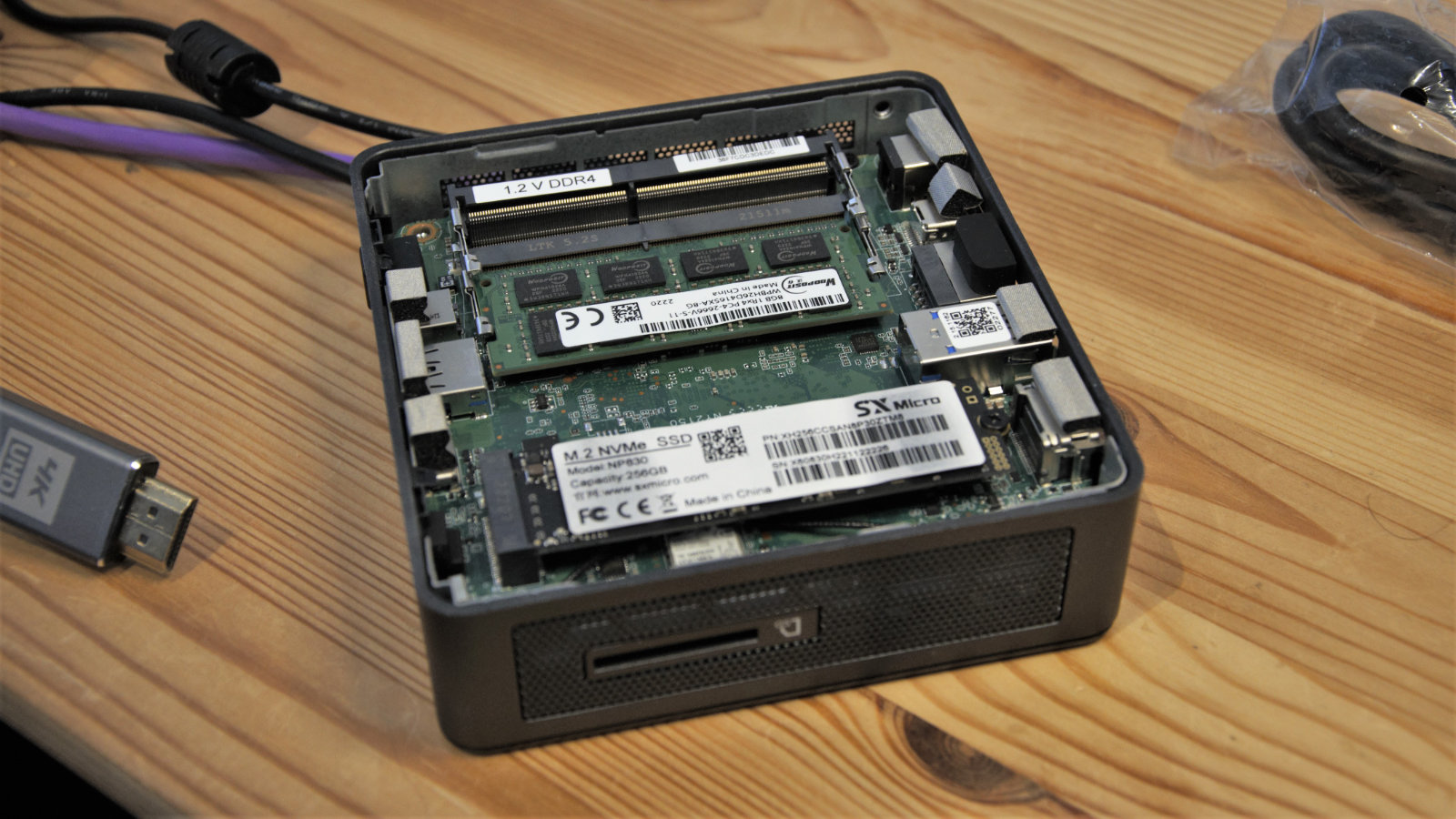
Another choice made here that is more understandable but is one of the difficult choices that using such low-powered silicon forces designers to make.
When complimenting this design with the number and specification of its USB ports, we didn’t factor in that the N5095 only has eight PCIe Gen 3 lanes.
How precisely these lanes are divided up isn’t obvious, but based on the performance of the NVMe drive in this system, only two lanes are allocated to the M.2 slot.
The speeds on this port are still faster than SATA, but not the fantastic performance you might expect from a desktop M.2 NVMe slot with four PCIe 3.0 lanes.
Another issue is that GEEKOM named this the MiniAir, inferring that it's best placed to be wirelessly networked. But that’s an incorrect assumption since the N5095 doesn’t have integrated AX class WiFi, and the chosen wireless module only offers WiFi 5 and Bluetooth 4.2.
The WiFi onboard can still work well, but those wanting a more reliable connection might be better served using the Ethernet LAN port and a cable.
What we liked about this, and many NUC designs, is that it can be upgraded easily.
Removing the underside takes a few seconds, and once inside, the NVMe drive can be swapped, and the memory expanded. The review machine came with a 256GB M.2 2280 drive, and this could be replaced with up to a 4TB in this form factor.
The memory is socketed, thankfully, and the 8TB single stick can be augmented with another of up to this capacity to bring the RAM up to 16GB.
Mistakenly on the GEEKOM website, it says that it can be upgraded to 32GB, but the limit on the N5095 is 16GB.
In use
The best aspect of this design is the SSD because it enables Windows 11 Pro to launch quickly, and it also delivers applications with equal aplomb. With only 256GB available for Windows and applications, there isn’t a massive amount of space for user files. The number of USB ports allows extra local storage to be easily added, and the internal NVMe drive could be replaced with a larger drive for those willing to reinstall or use a USB caddy to clone the existing drive.
For surfing and running basic office applications, the MiniAir 11 has more than enough power, but this platform isn’t up to handling more demanding tasks like video editing.
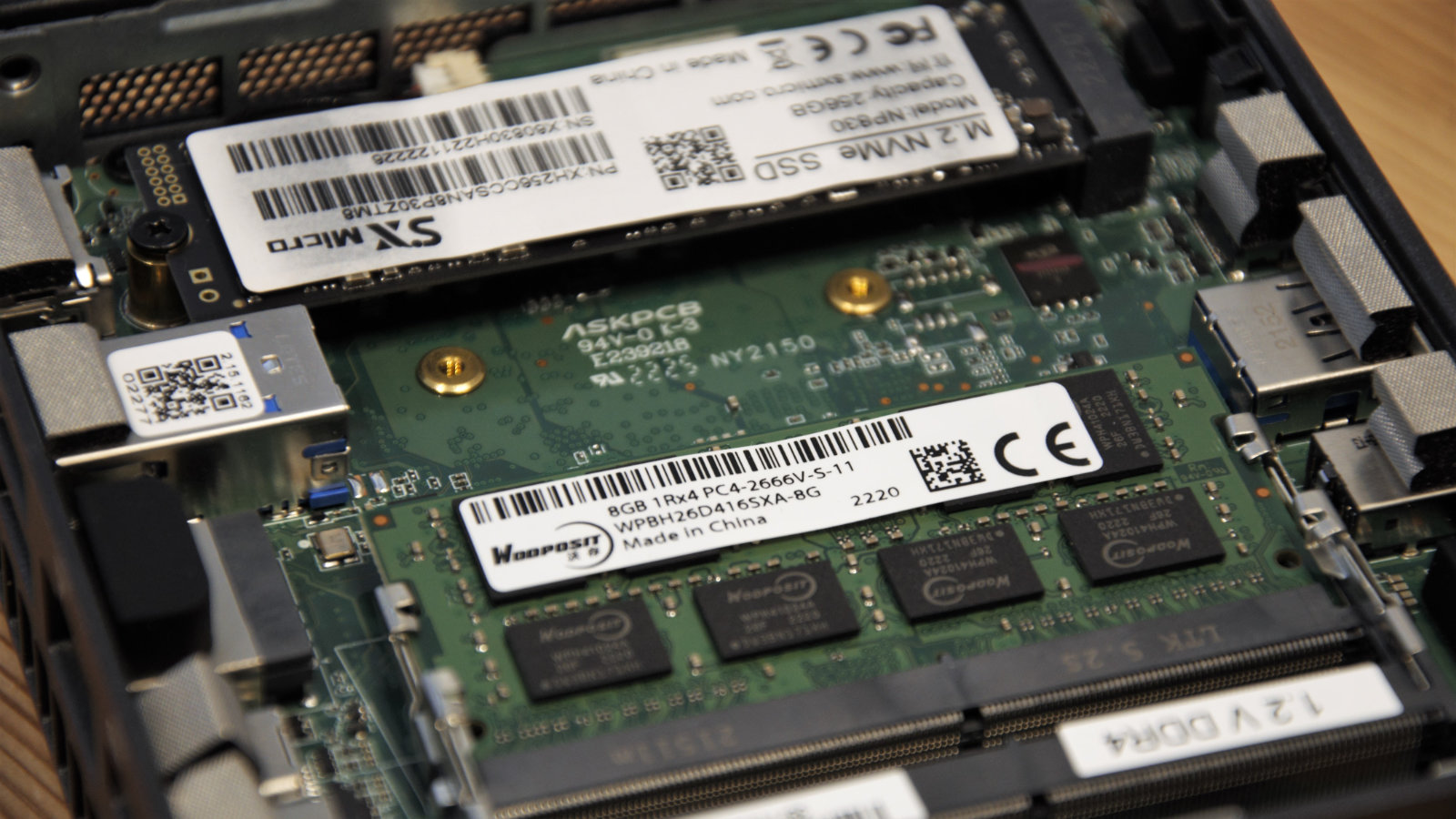
The GPU is the Achilles heel of this processor, and while you can expand both storage and memory, that’s a component you can’t easily upgrade.
With the HDMI, MiniDP and a 10Gbit USB-C port, it is theoretically possible to connect three 4K monitors to this machine. But given the limited video hardware, we wouldn’t recommend doing this.
Overall, the MiniAir 11 is an effective tool for those with modest objectives but not something that a person with an exceptionally tight deadline or intensive tasks would want to rely upon.
The Windows 11 Pro installation isn’t without a little bloatware, but at least GEEKOM didn’t put the resource-hungry Norton Security on it.
Performance
Here's how the GEEKOM MiniAir 11 scored in our suite of benchmark tests:
3DMark Wild Life: 1495; Fire Strike: 611; Time Spy: 206;
Cinebench R23 CPU pts: 617 (single-core); 2095 (multi-core)
GeekBench 5: 451 (single-core); 1404 (multi-core), 2074 (OpenCL)
CrystalDiskMark: Sequential Read: 1501.51MB/s; Sequential Write: 1129.22 MB/s
PCMark 10 (Office Test): 2356
Windows Experience Index: 5.2
Depending on which benchmark scores you look at, the MiniAir 11 can be classified as good, bad or downright ugly.
Undoubtedly the best result of these is the CrystalDiskMark 8.0.4 scores that reveal read performance three times that of a SATA drive and more than double the write throughput.
While these numbers aren’t great for an NVMe-connected drive, they represent predictable results when the M.2 PCIe slot only has two lanes connecting it to the processor.
As many Mini PC designs often only have SATA, even two PCIe lanes represent a significant step up in storage performance.
This NVMe capability helps elevate the PCMark 10 score to a level that’s more than respectable.
Where things are less wonderful are any tests that involve CPU processing. Given that on paper, the N5095 is so close to the N5105, their respective scores are markedly different.

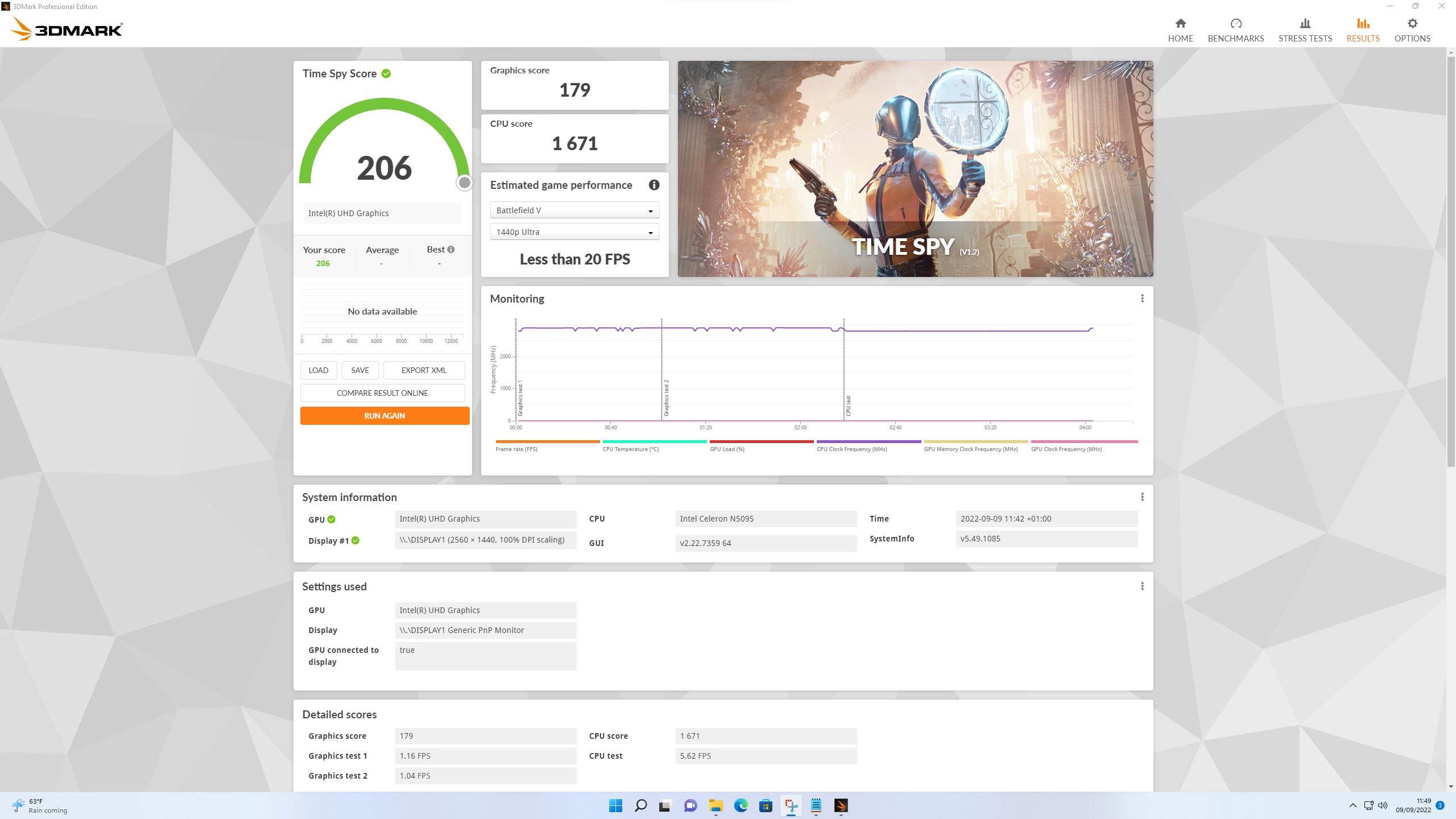
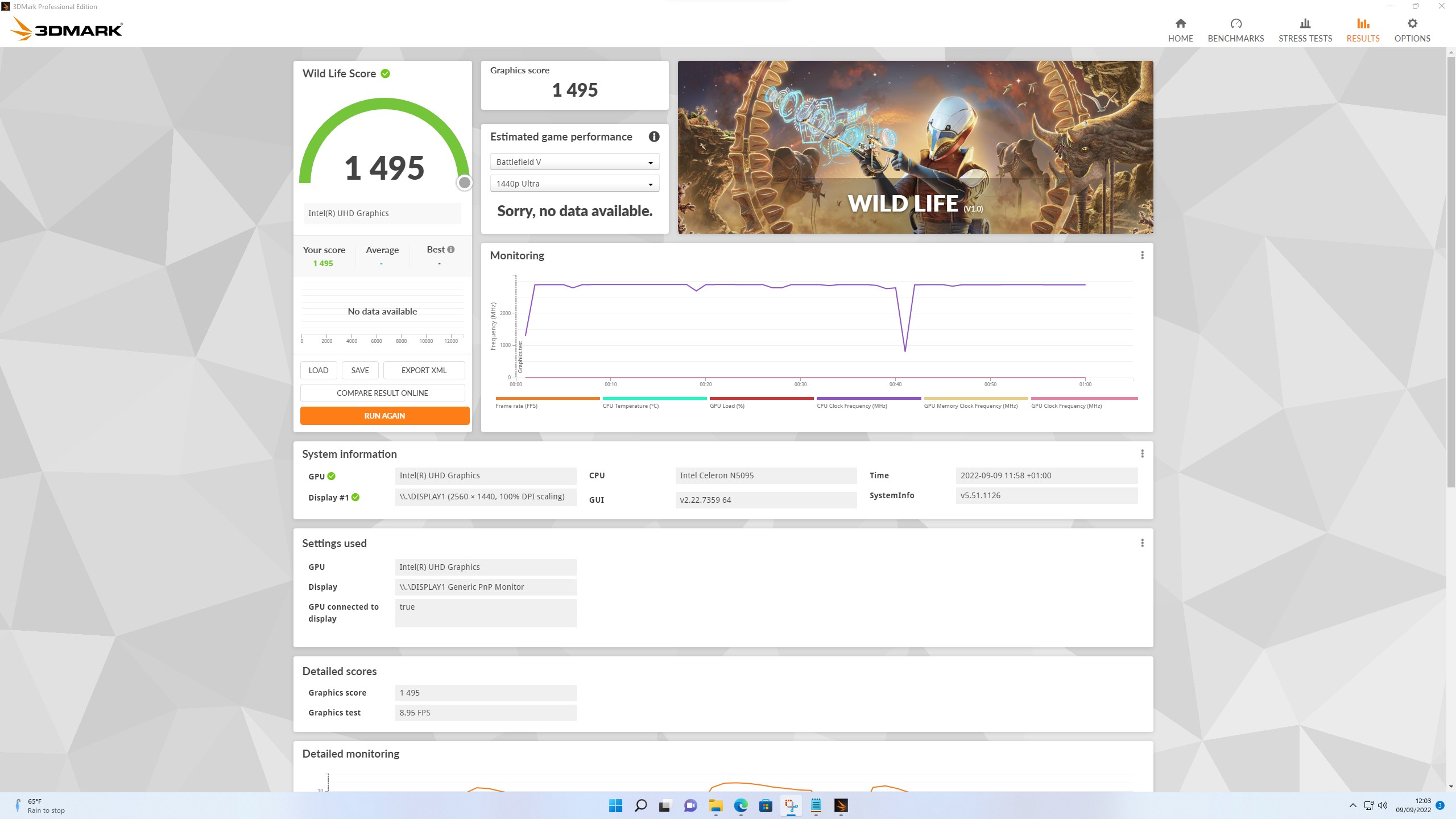
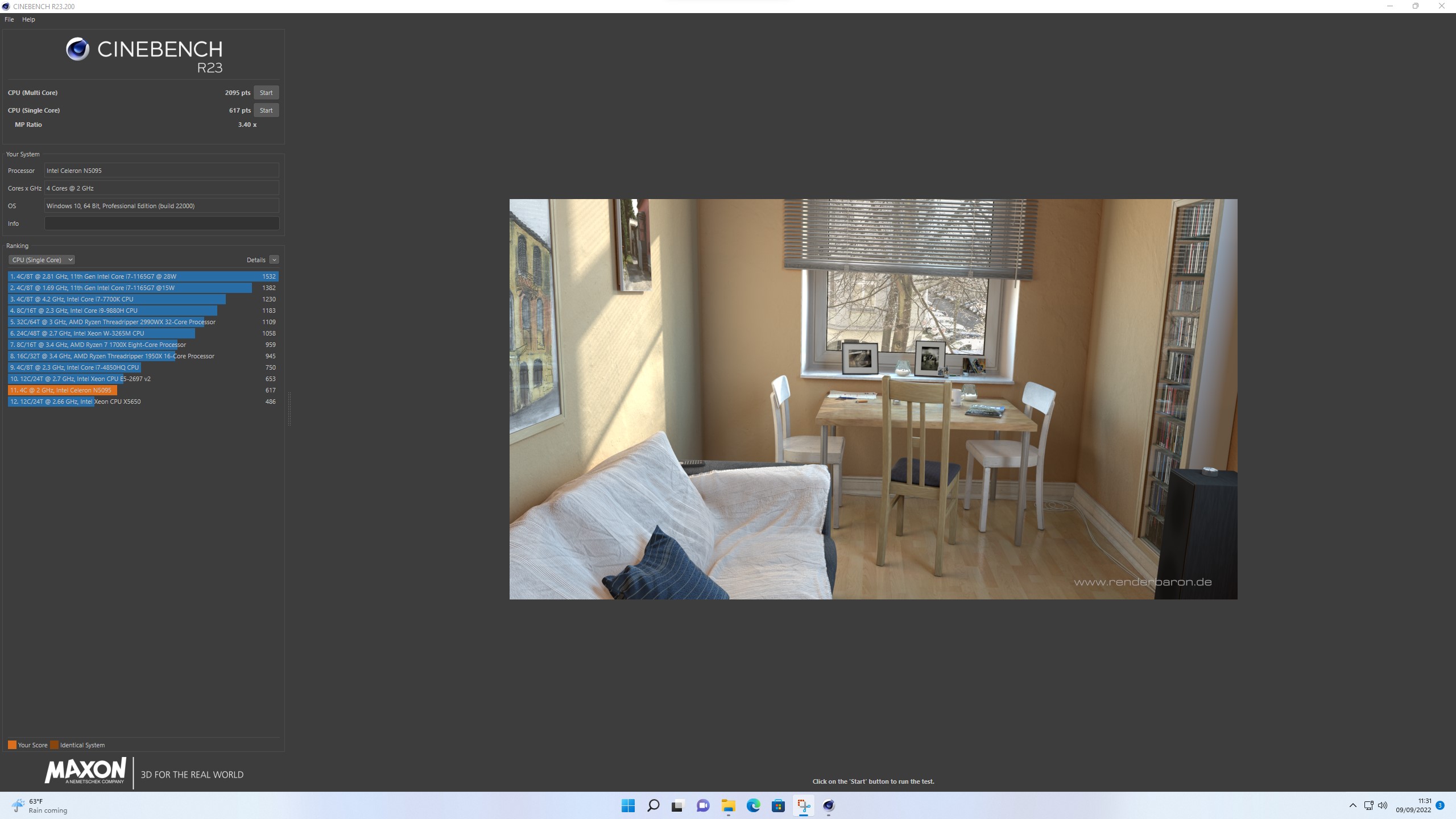
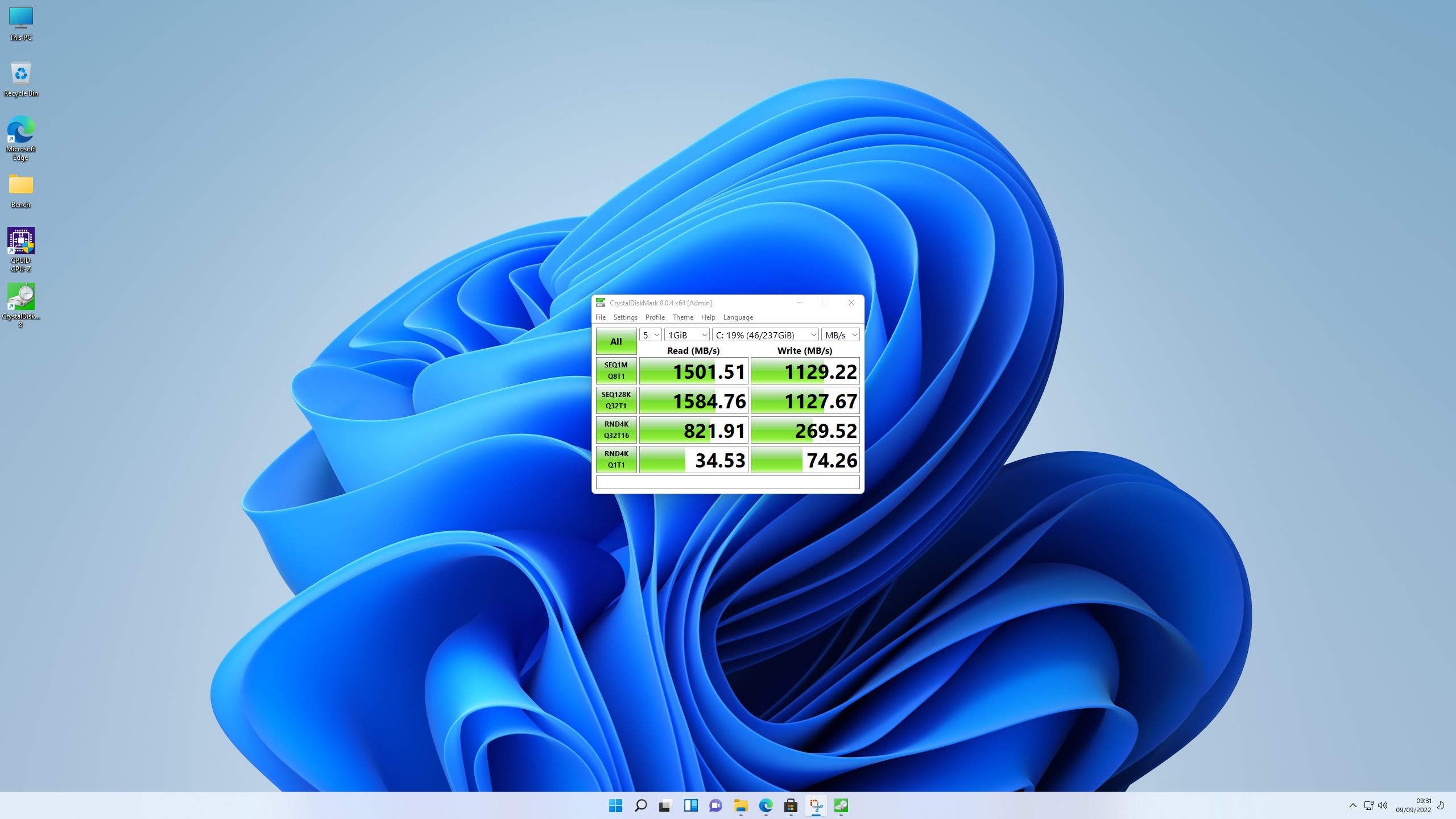
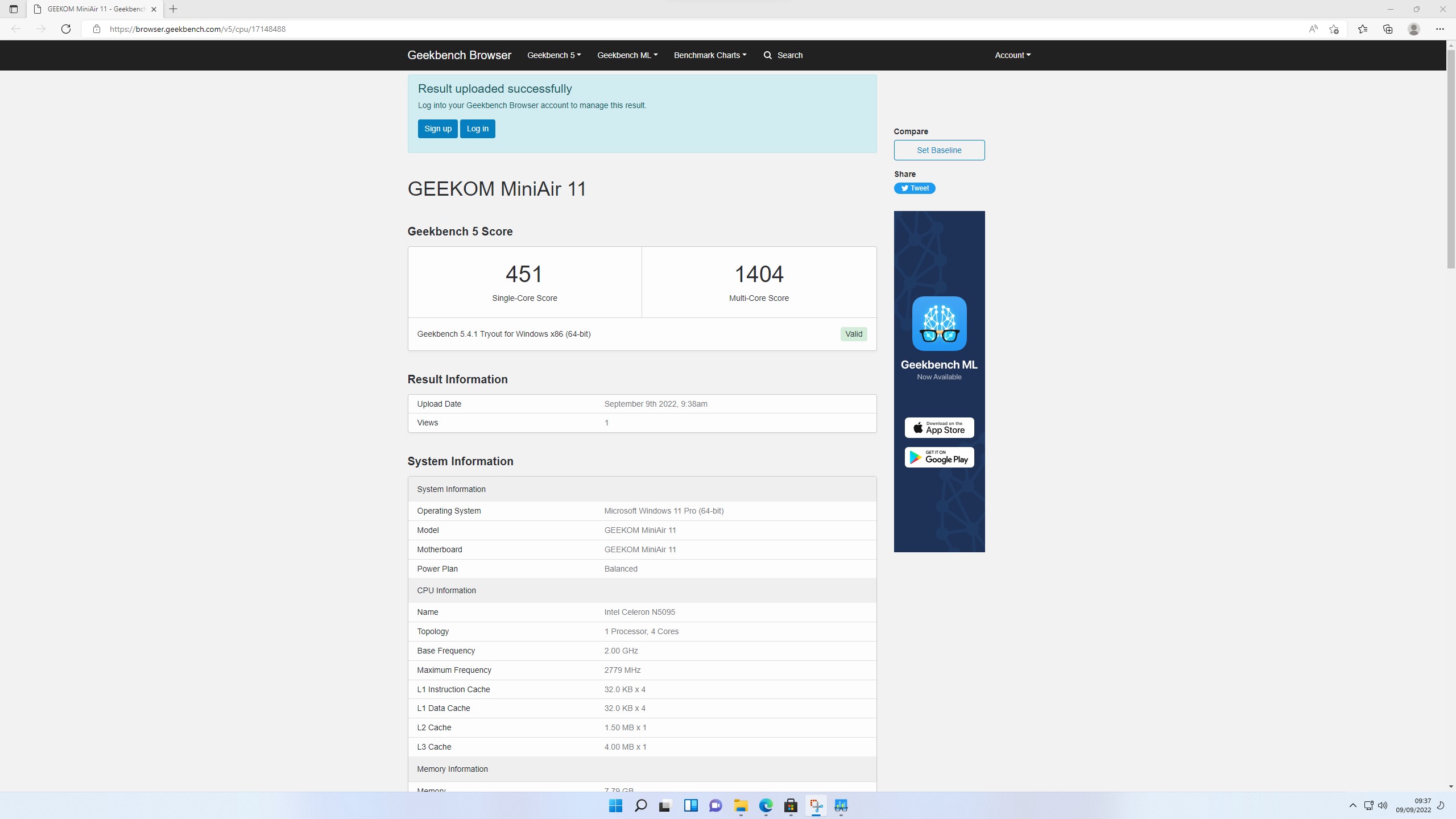

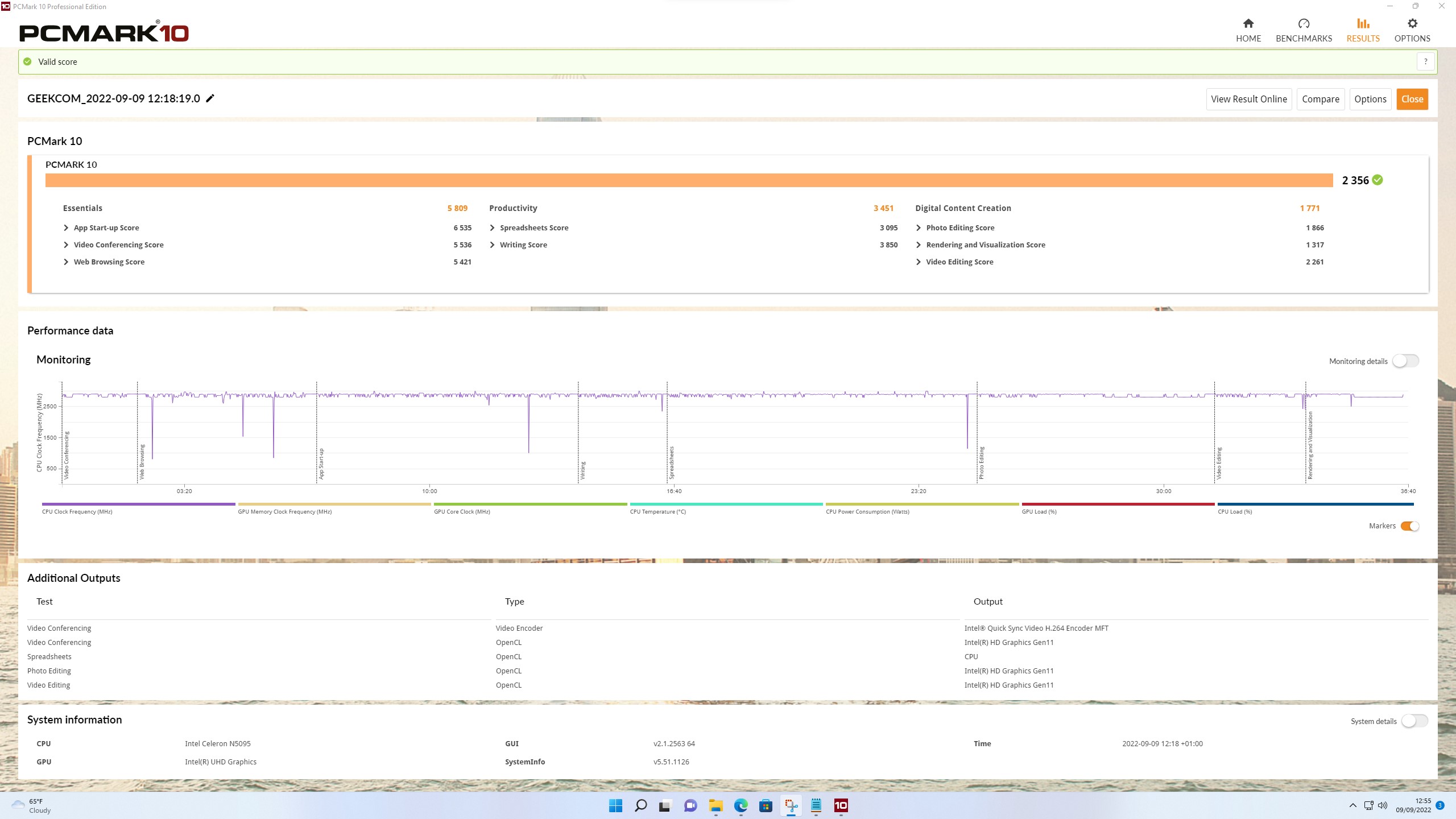
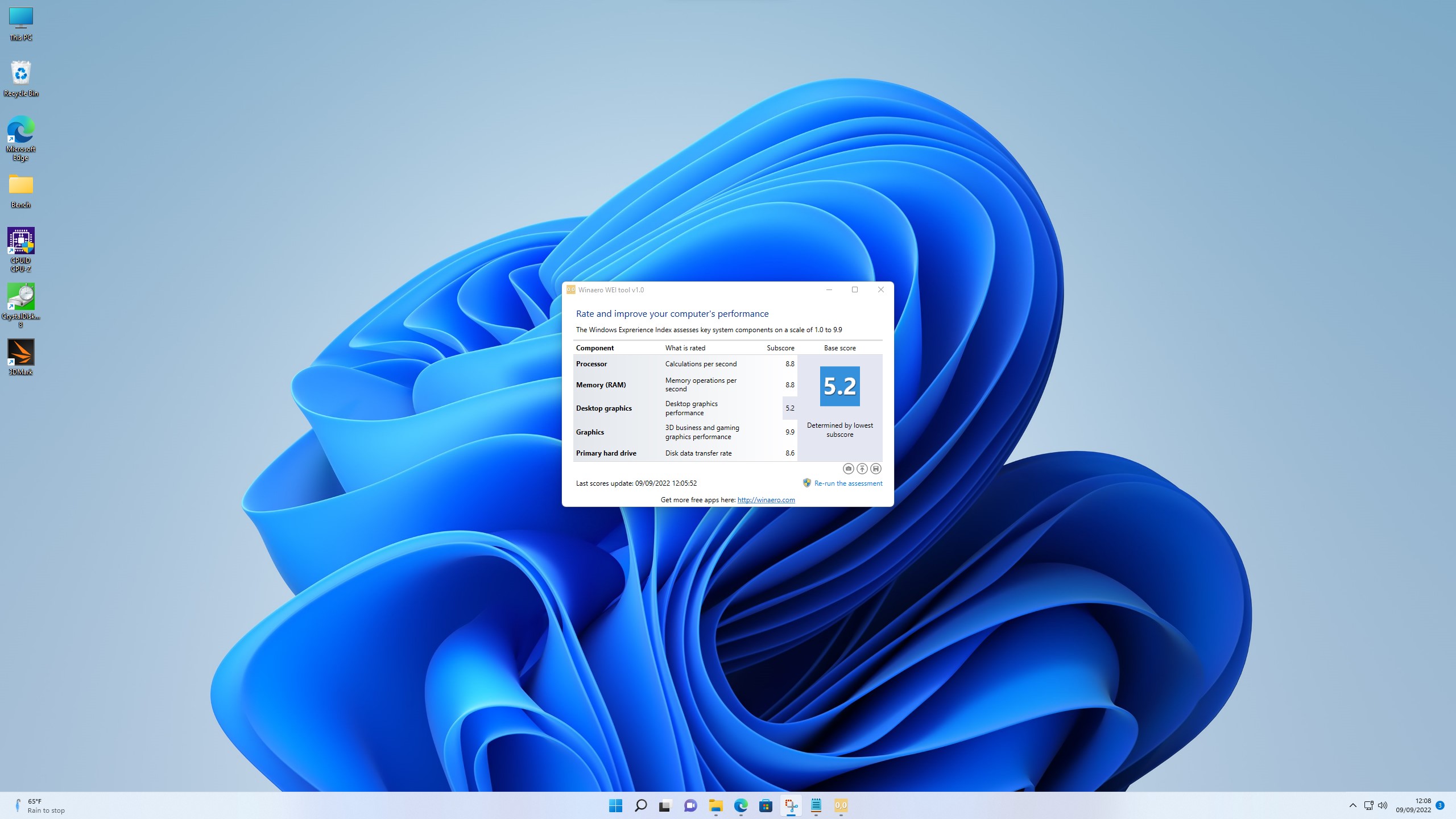
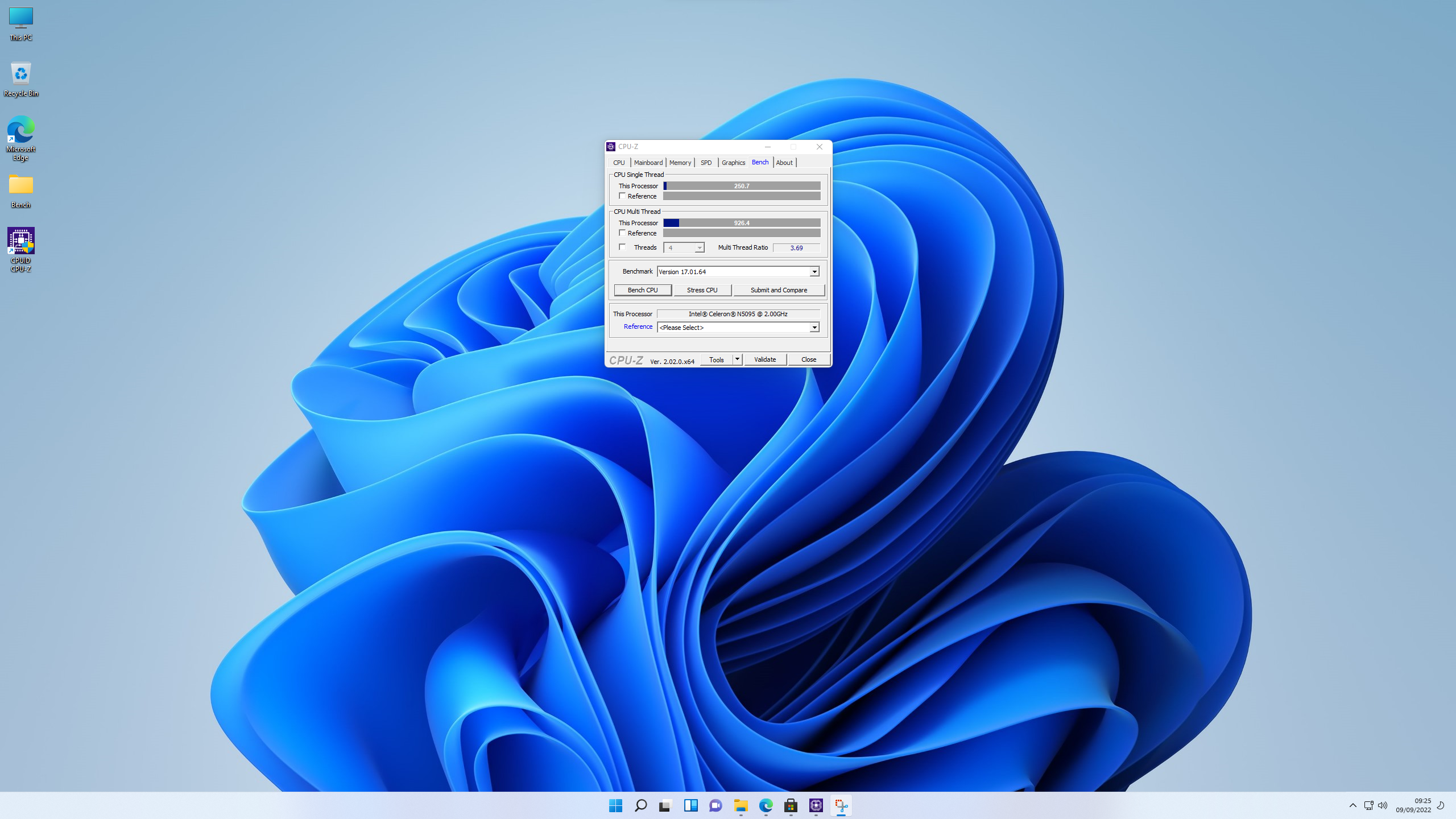
In GeekBench, the single-core test result is just 451, whereas the N5105 in the Beelink U59 managed 620, or 37% faster. Multi-core results are 45% speedier, and OpenCL is 78% quicker on the N5105 with the same number of cores.
Equally dire results are those that rely to a greater degree on the GPU, as in the 3DMark tests, where typically, the UHD Graphics on the N5095 are between 50-60% of the scores of the better UHD Graphics on the N5105.
Even 3DMark Wild Life, a test primarily designed for phones and laptops, is reduced to being a slideshow on this hardware.
In conclusion, if you are looking for a small system with some grunt, the MiniAir 11 isn’t it.
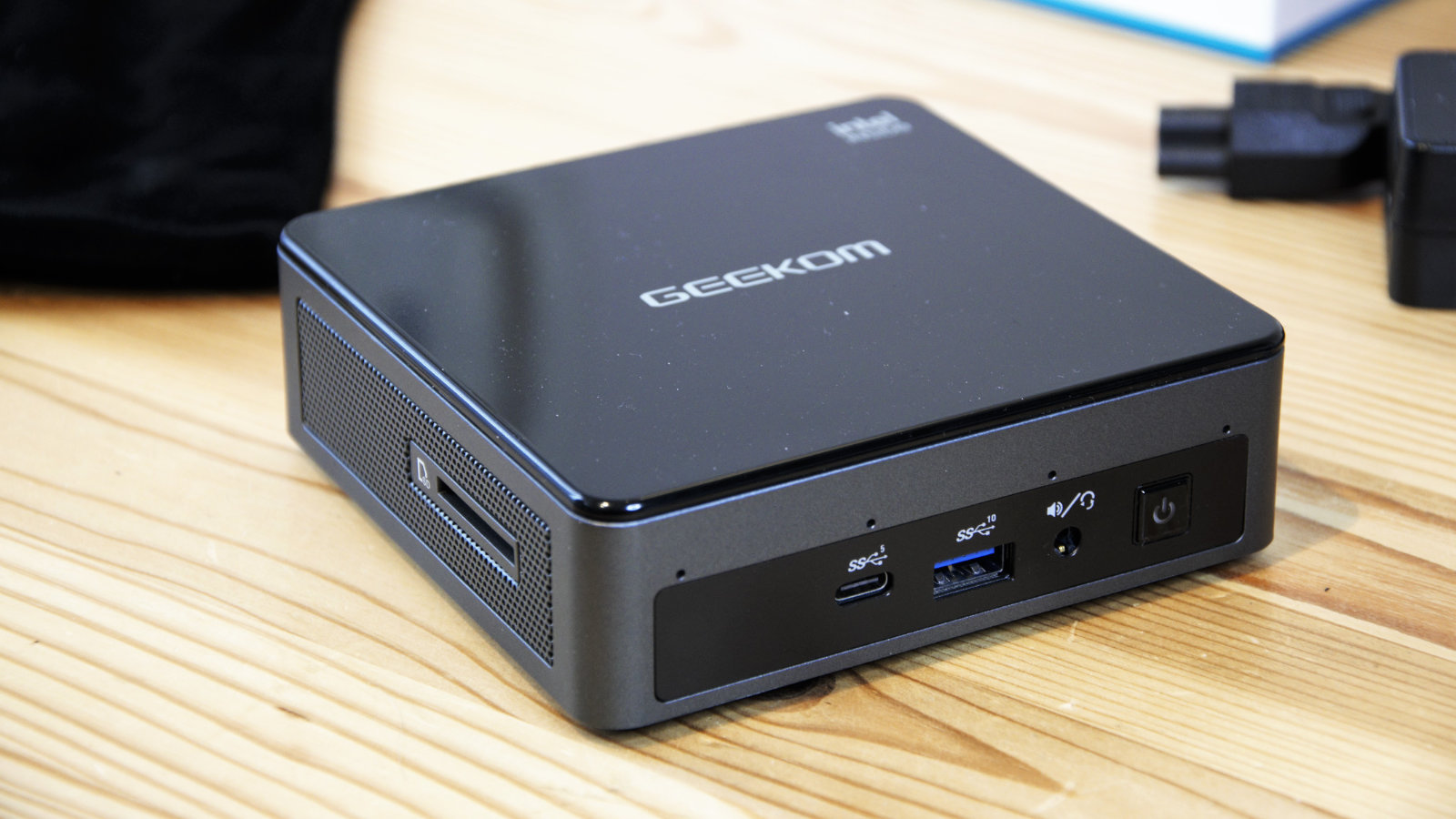
Final verdict
There is a delicate balance to be struck when designing a NUC, and the GEEKDOM MiniAir 11 never quite manages to achieve optimal equilibrium.
Where it's acceptable for general office use, the N5095 processor is on the tepid side and lacks performance for more challenging jobs. The GPU is at the low end of the limp performance that Intel UHD doles out, making it unsuitable for those exercises involving moving graphics.
For greater clarity, the MiniAir 11 needs to be compared with other NUC devices, like the Beelink U59 we recently reviewed.
That machine used a better processor that included integrated WiFi 6, and to deliver the number of 5Gbit USB ports onboard, it traded the M.2 slot down to SATA-only operations and dual gigabit LAN ports.
Conversely, the MiniAir 11 went with an M.2 NVMe slot, allowing for faster storage, and used the spare lane capacity for better 10Gbit USB ports and the WiFi 5 network module.
If quicker storage is important for you, then GEEKOM made the right choice, and if CPU/GPU performance is critical, then a different NUC might be more suitable.
The GEEKOM MiniAir 11 is probably better suited to someone doing general office chores, whereas the Beelink U59 has a broader selection of uses that might include embedded roles, like a firewall or presentation system.
For the relatively low asking price, the GEEKOM MiniAir 11 is a useful piece of PC hardware. Just don’t expect gaming or interactive graphics from it.
0 comments:
Post a Comment